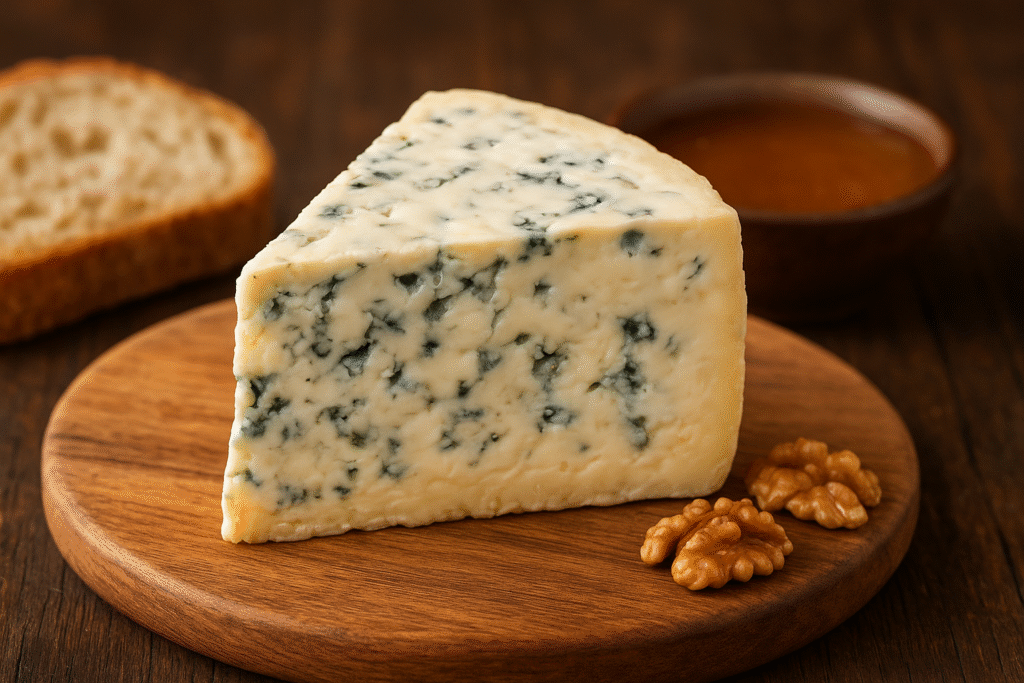Among the many cheeses that have captured the hearts of food lovers, one unique creation stands out for its perfect balance of richness and tang—masgonzola. This indulgent cheese offers a smooth and flavorful experience that combines the best qualities of two Italian classics: mascarpone and gorgonzola. Masgonzola has quickly become a favorite among chefs and home cooks who appreciate its creamy texture and versatile flavor. If you love gourmet food and want to explore something new, learning about masgonzola is the perfect place to start.
What Is Masgonzola?
Masgonzola is a delicious fusion cheese that blends the creamy sweetness of mascarpone with the bold, tangy flavor of gorgonzola. The result is a soft, marbled cheese that is as beautiful to look at as it is to taste. It is often referred to as a “bridge cheese” because it connects the delicate and the strong, the mild and the mature. Masgonzola spreads easily, melts beautifully, and adds a touch of luxury to any dish.
The Origins of Masgonzola
Although masgonzola may seem like a modern invention, its inspiration lies in centuries-old Italian cheesemaking traditions. Both mascarpone and gorgonzola originate from the Lombardy region of northern Italy, a place famous for its rich dairy culture. Cheesemakers combined these two distinct varieties to create something new yet rooted in heritage. The creation of masgonzola reflects how culinary traditions continue to evolve while honoring their origins.
How Masgonzola Is Made
The process of making masgonzola begins by selecting high-quality mascarpone and gorgonzola dolce. The two cheeses are carefully blended or layered to achieve a harmonious texture and taste. Cheesemakers may allow the mixture to rest briefly, giving time for the flavors to integrate. The creamy mascarpone softens the sharpness of gorgonzola, resulting in a cheese that is both smooth and subtly tangy. Each bite of masgonzola offers a delightful combination of creaminess and complexity.
Taste and Texture
Masgonzola’s taste is rich, buttery, and slightly sweet, with the distinctive edge that comes from gorgonzola. The mascarpone base gives it a velvety mouthfeel, while the blue veins contribute a mild yet satisfying bite. Its texture is perfect for spreading on toast, crackers, or crostini. When warmed, masgonzola melts into a luscious sauce that clings beautifully to pasta or vegetables. This balance of smooth and bold makes it appealing even to those who normally shy away from stronger blue cheeses.
Culinary Uses for Masgonzola
One of the best things about masgonzola is its versatility. You can use it in both sweet and savory recipes, transforming ordinary dishes into gourmet creations.
- Pasta and risotto: Stir a spoonful of masgonzola into freshly cooked pasta or risotto for an instant creamy sauce.
- Meat and vegetables: Use it as a filling for chicken breasts, mushrooms, or baked potatoes.
- Pizza topping: Spread a thin layer over your pizza base for a luxurious, creamy finish.
- Appetizers: Pair masgonzola with honey, walnuts, and figs for an elegant starter.
- Desserts: Add a touch to cheesecakes or tarts for a subtle savory balance.
Health and Nutrition
Masgonzola, like most cheeses, offers valuable nutrients such as calcium, protein, and essential fats. However, it should be enjoyed in moderation because of its richness. A small portion of masgonzola can enhance the flavor of a dish without adding excessive calories. Choosing high-quality cheese made from fresh milk ensures better nutrition and taste. When consumed mindfully, masgonzola can be part of a balanced and satisfying diet.
Why Masgonzola Is Gaining Popularity
The growing interest in artisanal and fusion foods has helped masgonzola rise in popularity. People are increasingly seeking out new tastes that blend tradition with creativity. Food enthusiasts appreciate how masgonzola captures the comfort of classic Italian flavors while offering something refreshingly different. It’s also becoming a favorite ingredient among chefs who value its ability to elevate simple recipes with minimal effort. Whether served on a cheese board or used in fine dining, masgonzola adds sophistication and depth to any meal.
Perfect Pairings for Masgonzola
Masgonzola pairs wonderfully with many foods and drinks. Its creamy texture and balanced flavor make it an ideal partner for wines like Sauvignon Blanc, Chardonnay, or even a sweet Moscato. Fresh pears, apples, and grapes bring out its natural sweetness, while honey and nuts highlight its savory side. When served with rustic bread or crackers, masgonzola becomes the centerpiece of an unforgettable appetizer.
Storage and Serving Tips
To preserve its quality, store masgonzola in the refrigerator inside an airtight container. Before serving, let it sit at room temperature for about 30 minutes to allow its full aroma and flavor to develop. Because it contains mascarpone, it’s best enjoyed within a few days of opening. For the best experience, always use clean utensils when handling masgonzola to prevent spoilage.
Conclusion
Masgonzola is a true celebration of flavor and craftsmanship. It represents the harmony that can exist between tradition and innovation, between strength and subtlety. Whether spread on warm bread, melted into a creamy sauce, or served alongside fruit and wine, masgonzola adds richness and charm to any occasion. For those who appreciate fine food, discovering masgonzola is not just about tasting cheese—it’s about experiencing the art of flavor balance at its best.
FAQs
What exactly is masgonzola?
Masgonzola is a fusion of mascarpone and gorgonzola cheeses, creating a creamy, mildly tangy cheese perfect for many dishes.
How can I use masgonzola in cooking?
It’s great for pasta, risotto, sauces, and appetizers or simply spread on fresh bread.
Does masgonzola taste like regular gorgonzola?
Masgonzola is milder and creamier than traditional gorgonzola, making it more approachable for those who prefer subtler flavors.
How should masgonzola be stored?
Keep it refrigerated and sealed tightly, then bring it to room temperature before serving for the best flavor.
Is masgonzola suitable for vegetarians?
That depends on the brand, as some versions may use animal rennet, so always check the label.

